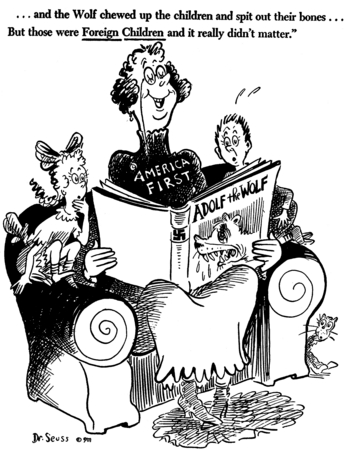By Celica Cook, SBM Student Life Editor
Monday, March 2 marked the great children’s author, Dr. Seuss’s 116th birthday. Even though he passed away in 1991, remembering Dr. Seuss on his birthday week is a tribute to him and his work that inspired the minds of so many young readers.
Many of us know Dr. Seuss through the children’s books and cartoons that so many of us are familiar with. “Cat in the Hat,” “Horton Hears a Who” and “The Lorax” are some titles that resonate with most Dr. Seuss readers. There is a moral to every story. Dr. Seuss had a talent for expressing a concept through written and visual art. Sometimes the messages from Dr. Seuss’s stories deal with larger issues in humanity: racial injustice, the destruction of the earth and universal equality among all groups of people. He was an advocate for social justice. Some of his stories make references to the second World War. You have to read a little closer to pick up on those minute details.
 Perhaps Dr. Seuss is not as known for his time as a political cartoonist in the 1940’s. For two years, Dr. Seuss was the chief editorial cartoonist for PM, a New York newspaper. He drew over 400 cartoons for PM in his two year career there. His work was also published in other journals, though these are less known.
Perhaps Dr. Seuss is not as known for his time as a political cartoonist in the 1940’s. For two years, Dr. Seuss was the chief editorial cartoonist for PM, a New York newspaper. He drew over 400 cartoons for PM in his two year career there. His work was also published in other journals, though these are less known.
In 1942, Seuss decided to join up with the US Army Airforce. He was too old to join, so he took on the role as commander at the Animation Department of the First Motion Picture Unit of the United States Army. He drew propaganda posters for the Treasury Department, as well as made animated training films. It was a way for him to serve his country through his unique gifts and talents.
His publishing career began as a writer for the humor magazine at Dartmouth College, The Jack-O-Lantern. After becoming chief-editor of the magazine, he violated Prohibition, and was banned from the magazine. In order to ensure that his writing career remained unhindered, he continued to write under the pen name, ‘Seuss’. It stuck with him for the rest of his life.
In 1927, Dr. Seuss got a cartoon published in The Saturday Evening Post. It was his first ever professionally published cartoon. Later his career as an artist would flourish as people began to recognize the name, ‘Seuss’.
He first got experience working with childrens books when Viking Press offered him a contract to illustrate a collection of children’s sayings called ‘Boners,’ a word used at the time to describe a foolish mistake. It was a humor book- something that Dr. Seuss was good at and enjoyed. The book was not a particular success, but it paved the way for his career in children’s literature to come.
Dr. Seuss was awarded seven honorary doctorates, and was the recipient of the 1984 Pulitzer Prize. His last book was “Oh, the Places You’ll Go” which was a New York Times Bestseller. Today, people are still inspired by it’s message. One year later, Dr. Seuss died of cancer at the age of 87.
Dr. Seuss’s works have been a favorite of children and adults alike for generations. His silly, yet inspiring stories as well as his colorful cartoons will continue to inspire generations to come. This week, take some time to enjoy a book or two by Dr. Seuss. His legacy lives on through the stories he told, and we are blessed to have them.
Sources:
https://www.thefamouspeople.com/profiles/theodor-geisel-3757.php
https://library.ucsd.edu/speccoll/dswenttowar/#intro
https://www.thoughtco.com/dr-seuss-1779838
Images Sourced From:
https://library.ucsd.edu/speccoll/dswenttowar/#intro
https://www.youtube.com/watch?v=_Y_eDQTFo-E
